Guide to Building a Successful Leadership Development Team 2025
In 2025, the business world is more unpredictable than ever. Organizations face rapid change, digital disruption, and new challenges every day. The demand for a strong leadership development team is at an all-time high.
This guide is your roadmap to building a leadership development team that accelerates growth, sparks innovation, and strengthens resilience. You’ll discover why these teams are vital, what makes them thrive, and how to create one step by step.
Ready to future-proof your organization? Dive in and start transforming your leadership development team today.
The Strategic Importance of Leadership Development Teams in 2025
In 2025, the business world is moving at lightning speed. Organizations face unprecedented complexity, making the leadership development team more crucial than ever. These teams are not just a trend—they’re the backbone of growth, innovation, and resilience. Let’s explore why investing in a strong leadership development team is now a strategic necessity.
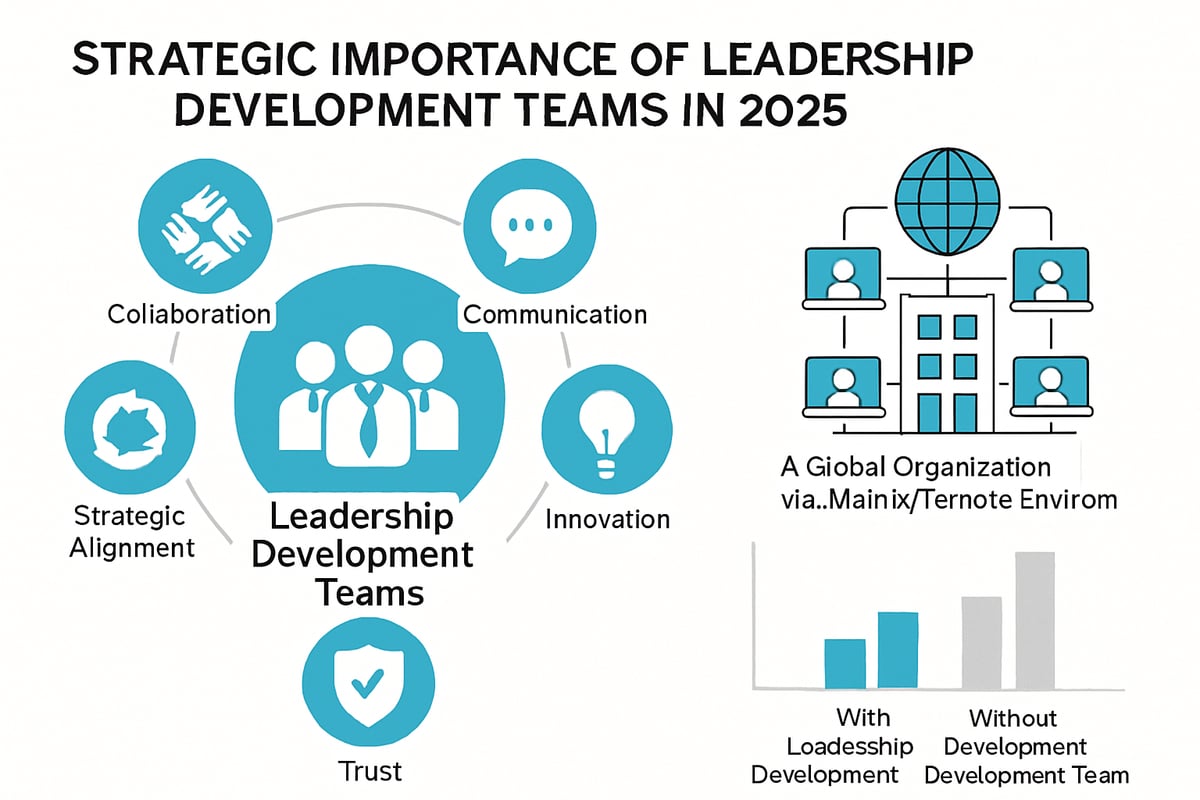
The Evolving Role of Leadership Teams
Gone are the days when leadership was a solo act. In 2025, organizations are embracing the shift from individual leaders to dynamic leadership development teams. This transition is visible across industries, from tech giants like Google and Amazon to forward-thinking public sector agencies.
Why the change? Businesses operate in matrixed, remote, and cross-functional environments. Challenges have grown more complex. A leadership development team brings together diverse minds, allowing for rapid problem-solving and shared decision-making. Distributed leadership is now essential for agility, especially when teams are dispersed across time zones and departments.
Collaborative leadership development teams empower organizations to adapt quickly. They break down silos, ensuring that expertise is leveraged from every corner of the company. As a result, organizations become more resilient and innovative in the face of constant change.
Key Benefits for Organizations
A well-structured leadership development team delivers tangible benefits that ripple across the organization:
- Enhanced collaboration: Diverse perspectives fuel better decisions and stronger teamwork.
- Improved communication: A leadership development team creates clear, consistent messaging and open feedback channels.
- Strategic thinking: Teams align vision and goals, ensuring adaptability in a shifting marketplace.
- Innovation: Collaboration sparks creative problem-solving and encourages responsible risk-taking.
- Trust and cohesion: Investing in team development builds trust, camaraderie, and boosts employee satisfaction.
According to research from Thirst and CCL, organizations with strong leadership development teams outperform their peers in collaboration and retention. For more specific strategies on building these strengths, see Team leadership development insights.
Data and Insights
The numbers speak volumes. CCL’s studies reveal that high-performing leadership development teams directly link to improved business output and faster organizational impact. Companies with robust teams report higher engagement, better retention, and more effective succession planning.
Thirst’s findings echo this: leadership development teams drive measurable gains in organizational performance. Data shows that investing in these teams is not just about leadership—it’s about creating a workplace where innovation thrives and people stay.
In summary, the strategic value of a leadership development team is clear. Organizations that prioritize team-based leadership are better equipped to handle the challenges of 2025 and beyond.
Core Components of a High-Performing Leadership Development Team
Building a high-performing leadership development team requires careful attention to core components that fuel success. From essential skills to strategic alignment, these elements ensure the team drives organizational impact and resilience in 2025.
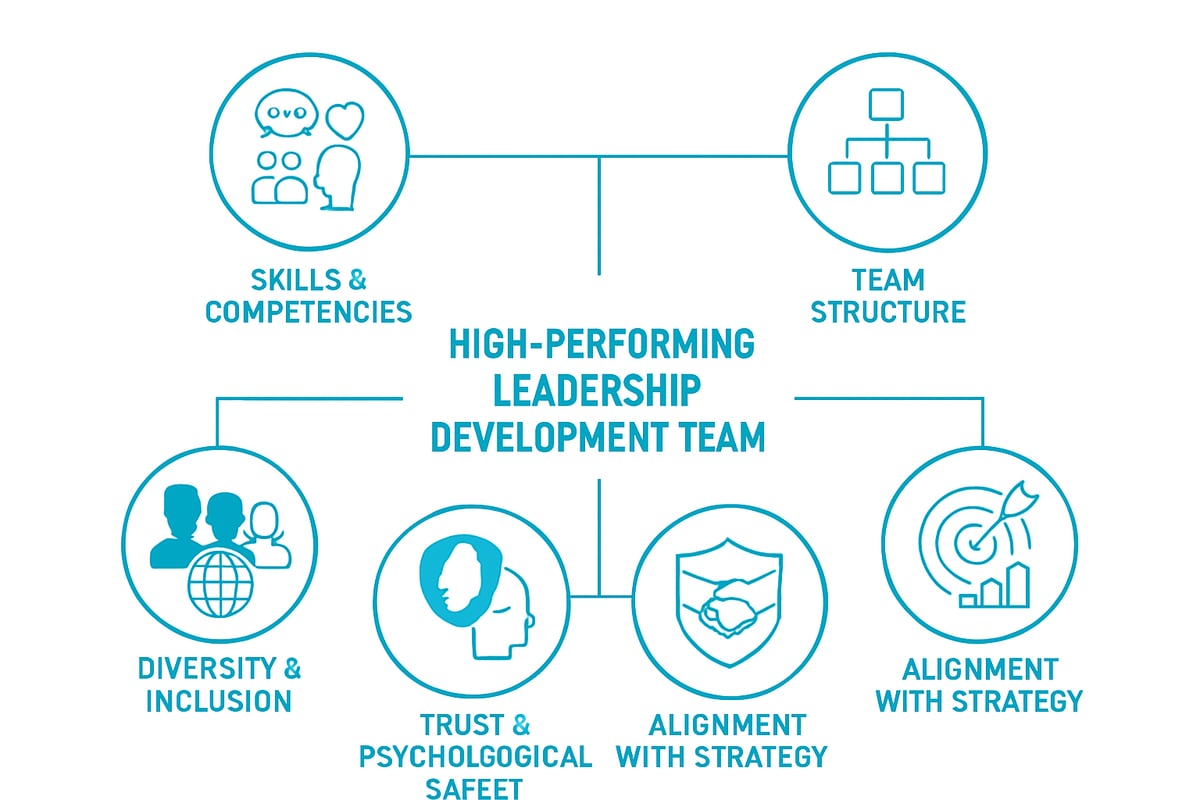
Essential Skills and Competencies
A successful leadership development team must possess a mix of foundational skills and advanced capabilities. Core skills include communication, collaboration, and emotional intelligence. These enable team members to share ideas openly and work toward common goals.
Strategic thinking and sound decision-making are also vital. Adaptability and resilience help the team navigate change and disruption. When these competencies are present, the leadership development team can drive sustainable growth and innovation.
- Communication
- Collaboration
- Emotional intelligence
- Strategic thinking
- Decision-making
- Adaptability
By prioritizing these skills, organizations set their leadership development team up for long-term success.
Team Structure and Roles
An effective leadership development team thrives when roles and responsibilities are clearly defined. Each member brings unique expertise to the table, contributing to the team's overall effectiveness.
Key roles include:
- Team lead: Sets direction and drives accountability.
- Executive sponsor: Provides senior-level support and alignment.
- L&D specialist: Designs and delivers learning programs.
- HR partner: Ensures talent strategy and compliance.
- External coach or consultant: Offers objective insights and specialized guidance.
By structuring the leadership development team with these roles, organizations ensure all aspects of leadership growth are addressed. Clear responsibilities create focus and alignment with broader business goals.
Diversity and Inclusion
Diversity is a cornerstone of a high-performing leadership development team. Bringing together people from varied backgrounds, experiences, and perspectives leads to better decision-making and problem-solving.
Research from CCL shows that diverse teams consistently outperform homogeneous groups, especially when tackling complex challenges. Inclusion ensures every voice is heard, fostering a culture where innovation can thrive.
Prioritizing diversity within the leadership development team drives creativity, builds empathy, and strengthens organizational outcomes. It also enhances the team's ability to understand and serve a global, multicultural workforce.
Trust and Psychological Safety
Trust is the glue that binds a leadership development team. When team members feel psychologically safe, they're more willing to share ideas, challenge assumptions, and take calculated risks. This openness leads to stronger collaboration and continuous improvement.
According to CCL, trust is critical to team success. For actionable insights on strengthening trust, explore building trust in teams. Fostering a safe environment allows the leadership development team to innovate and adapt without fear of judgment.
Teams grounded in trust and safety become more resilient and effective, even in high-pressure situations.
Alignment with Organizational Strategy
A high-performing leadership development team must be tightly aligned with the organization's mission, vision, and strategic objectives. This ensures that leadership initiatives directly support business priorities and drive measurable results.
Frameworks like team charters help define purpose, set objectives, and track progress. Regularly revisiting these alignments keeps the leadership development team focused and agile.
When the team's goals mirror the company's direction, every effort contributes to overall success. Strategic alignment transforms the leadership development team from a support function into a key driver of organizational growth.
Step-by-Step Guide: Building a Leadership Development Team for 2025
The path to a high-impact leadership development team is intentional and strategic. Follow these 10 essential steps to assemble, empower, and sustain a team that will drive transformation in 2025 and beyond.
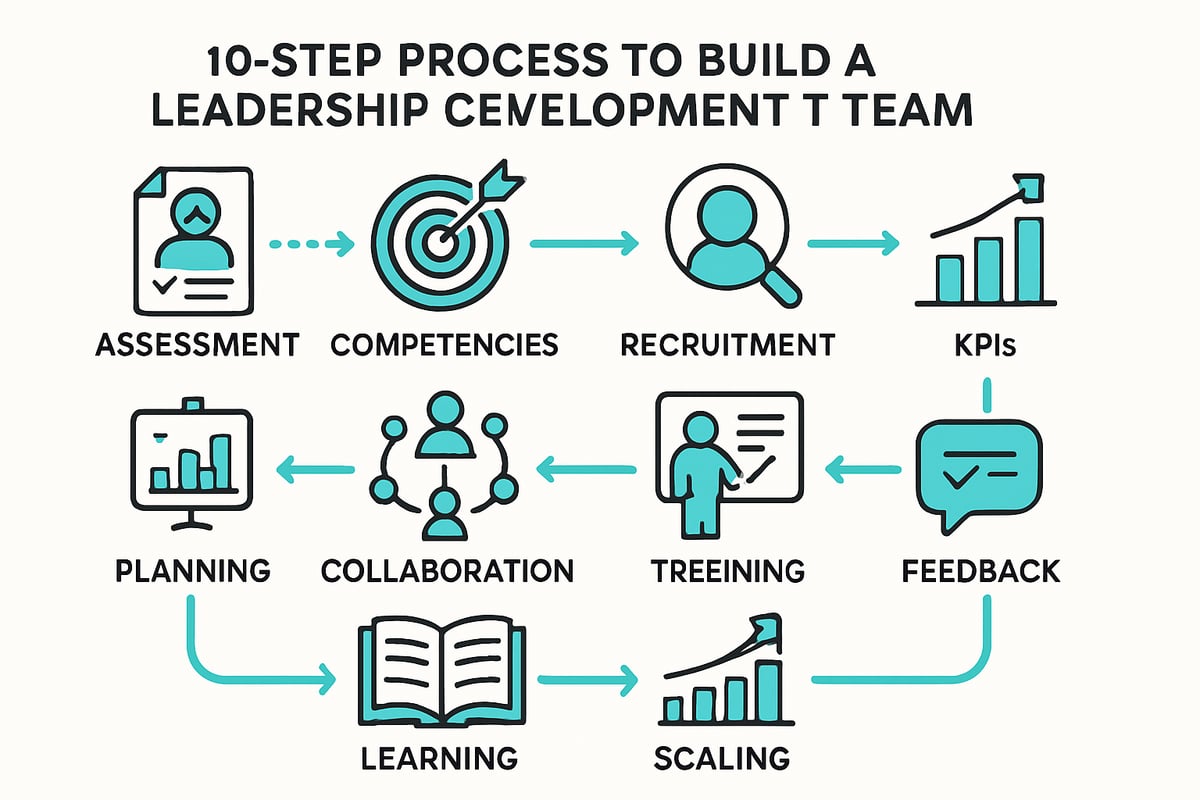
Step 1: Assess Current Leadership Capabilities
Start by taking a clear snapshot of your organization’s leadership strengths and gaps. Use tools like 360-degree feedback, skills audits, and personality assessments to map the current state. This baseline helps you understand where your leadership development team can add the most value.
- Gather input from multiple sources for a holistic view.
- Involve both leaders and direct reports in the process.
- Identify where leadership performance is strong and where growth is needed.
A thorough assessment ensures your leadership development team begins with actionable insights.
Step 2: Define Leadership Competencies and Success Metrics
Next, outline the key competencies your organization’s future leaders will need. These should align with your business strategy, culture, and values. Competencies might include strategic thinking, adaptability, emotional intelligence, or digital fluency.
Set clear success metrics so your leadership development team knows what progress looks like. These could be engagement scores, promotion rates, or innovation milestones.
- Align competencies with company mission.
- Consider compliance and regulatory needs.
- Use metrics to measure both short- and long-term impact.
A focused approach keeps your leadership development team on track.
Step 3: Set Clear Objectives and KPIs
With competencies defined, establish concrete objectives and key performance indicators (KPIs). Decide what your leadership development team must achieve—higher retention, improved engagement, or a robust leadership pipeline.
Develop a roadmap with timelines, milestones, and resource needs. Assign responsibility for each objective to ensure accountability.
| Objective | KPI Example | Responsible Party |
|---|---|---|
| Boost engagement | Engagement score +10% | Team Lead |
| Increase retention | Retention rate +5% | HR Partner |
| Pipeline growth | 3 new leaders/year | L&D Specialist |
A clear plan keeps your leadership development team focused and motivated.
Step 4: Recruit and Assemble the Right Team
Identify the talent you need both inside and outside the organization. Look for high-potential internal leaders, experienced HR partners, learning and development specialists, and even external coaches or consultants.
Diversity is key. Build a leadership development team with varied skills, backgrounds, and perspectives to drive innovation and better decision-making.
- Assign clear roles: team lead, executive sponsor, coach, HR partner.
- Seek balance between expertise and fresh viewpoints.
- Prioritize alignment with organizational goals.
Your leadership development team’s composition sets the stage for success.
Step 5: Design Individual and Collective Development Plans
Personalized and team-wide development plans are the backbone of growth. Tailor learning journeys for each member—mix workshops, mentoring, and on-the-job projects for maximum impact.
Set milestones for both individual and collective progress. Ensure plans are flexible to adapt to evolving needs.
- Use leadership improvement plan examples to structure effective development pathways.
- Build in accountability checkpoints.
- Encourage peer learning and cross-functional exposure.
A dynamic plan keeps your leadership development team growing together and individually.
Step 6: Implement Training, Coaching, and Mentoring Programs
Activate your plans with a blend of formal and informal learning. Organize workshops, seminars, and cross-functional projects. Pair team members with experienced mentors or coaches who challenge and support their growth.
- Provide access to digital learning platforms.
- Encourage knowledge sharing through peer coaching.
- Schedule regular reflection sessions.
Consistent development opportunities empower your leadership development team to lead with confidence.
Step 7: Foster Collaboration and Team Building
Trust and collaboration don’t happen by accident. Facilitate team-building activities that build rapport and psychological safety. Encourage participation in projects that cross departmental boundaries.
- Host regular team check-ins and retrospectives.
- Use collaborative tools to streamline communication.
- Celebrate milestones and shared wins.
A unified leadership development team is more resilient and innovative.
Step 8: Establish Feedback and Evaluation Mechanisms
Continuous improvement relies on feedback. Implement regular performance reviews, peer feedback sessions, and real-time analytics to gauge progress.
- Use data to identify trends and adjust strategies.
- Encourage open, two-way communication.
- Track both individual and team outcomes.
Effective feedback loops help your leadership development team stay agile and responsive.
Step 9: Promote a Continuous Learning Culture
Embed a mindset of ongoing growth within your leadership development team. Provide access to books, webinars, conferences, and learning resources. Recognize and reward leadership growth visibly.
- Launch internal knowledge-sharing groups.
- Offer incentives for completing learning milestones.
- Highlight success stories to inspire others.
A culture of learning ensures your leadership development team stays ahead of change.
Step 10: Monitor, Adjust, and Scale
Finally, track your KPIs and outcomes over time. Use insights from feedback and performance data to refine your approach. As successful practices emerge, scale them across departments and business units.
- Benchmark against industry standards for leadership development.
- Share best practices organization-wide.
- Remain flexible to adapt to new business challenges.
A leadership development team that evolves with the business creates lasting impact.
Best Practices and Trends in Leadership Development for 2025
Staying ahead in 2025 demands that every leadership development team not only keeps pace with change but also anticipates it. The most effective teams are those that actively embrace evolving best practices and leverage cutting-edge trends. Here’s how forward-thinking organizations are transforming leadership development for the future.
Embracing Technology and AI
Technology is revolutionizing how a leadership development team operates. Digital platforms now offer seamless access to leadership assessments, virtual training, and collaborative learning experiences. AI-driven analytics are taking personalization to the next level, allowing for tailored development plans and real-time progress tracking.
Teams are leveraging tools that automate routine tasks, freeing up more time for strategic thinking. Machine learning models can even identify gaps in team skills, ensuring that every leadership development team is prepared for the challenges of tomorrow.
Hybrid and Remote Team Leadership
As hybrid and remote work environments become the norm, a leadership development team must master new ways of leading distributed teams. Success relies on maintaining cohesion, building trust, and ensuring clear communication across time zones.
Research from CCL shows that hybrid teams thrive when leaders prioritize transparency and regular check-ins. Virtual team-building activities and digital collaboration platforms are essential tools for today’s leadership development team to keep everyone engaged and aligned.
Customization and Personalization
One-size-fits-all approaches are out. The modern leadership development team designs programs that adapt to individual and collective needs. This means offering flexible learning modules, curated content, and targeted coaching based on real-time feedback.
CCL’s research-driven modules, for example, allow organizations to select the skills most relevant to their goals. Personalized growth journeys ensure every member of the leadership development team builds the competencies needed to drive impact.
Fostering Inclusion and Belonging
Diversity, equity, and inclusion (DEI) are now central to every leadership development team strategy. Integrating DEI initiatives into leadership programs helps unlock innovation and boosts business outcomes. Diverse teams are proven to outperform homogeneous ones when it comes to creative problem-solving and decision-making.
Fostering a culture of belonging means ensuring all voices are heard and valued. This strengthens the leadership development team’s ability to adapt, collaborate, and drive lasting change.
Measuring and Demonstrating ROI
Proving the value of a leadership development team is more critical than ever. High-performing teams link leadership programs directly to business outcomes like retention, engagement, and innovation. Real-time analytics and continuous feedback cycles are vital for tracking progress and demonstrating results.
For a detailed look at effective metrics, explore Leadership Development KPIs: 12 Metrics That Drive Results, which highlights how to measure everything from promotion rates to pipeline growth. By focusing on the right data, your leadership development team can showcase its impact and secure future investment.
Noomii Corporate Leadership Program: Precision Coaching for Leadership Team Success
In today’s competitive landscape, building a high-impact leadership development team means leveraging science, strategy, and precision. The Noomii Corporate Leadership Program delivers an evidence-based approach that starts with advanced diagnostics, giving organizations a clear view of team strengths and hidden gaps. This data-driven clarity ensures every leadership development team receives tailored solutions, not generic training.
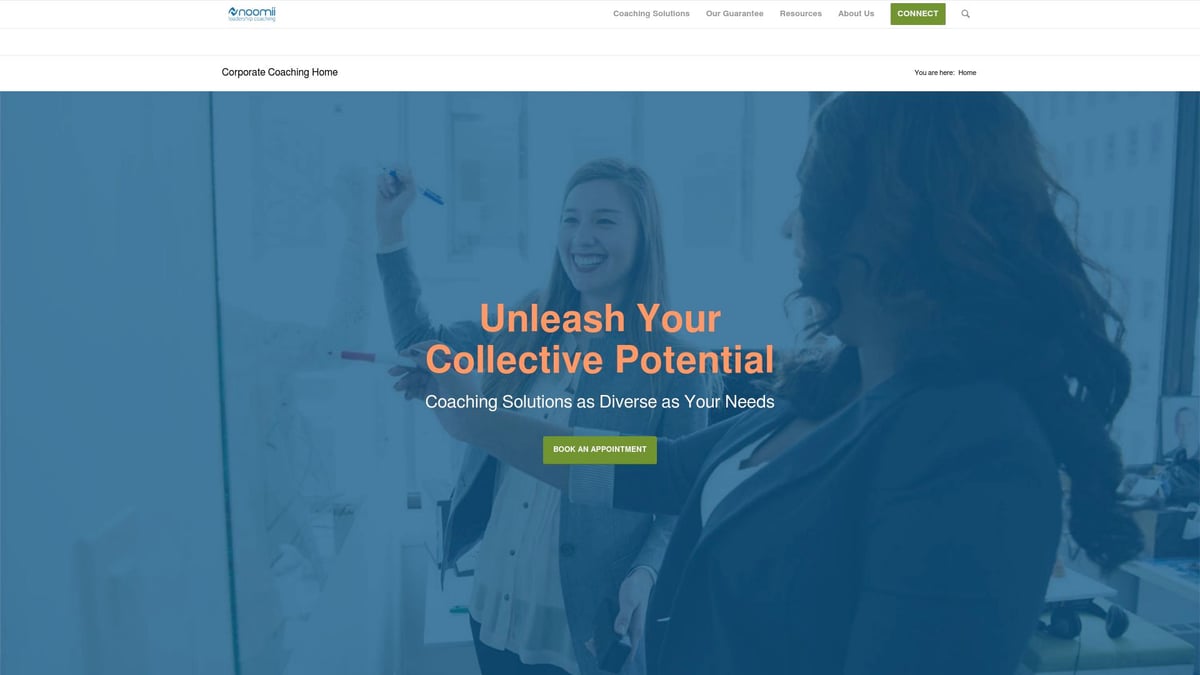
Noomii’s proprietary tools assess everything from communication style to decision-making agility. Once diagnostic results are in, Noomii’s platform uses precision coach matching to connect each leadership development team member with the ideal coach for their unique needs—be it conflict resolution, strategic growth, or executive presence. These coaches apply proven leadership coaching strategies to accelerate transformation and drive measurable results.
Custom intervention plans are a cornerstone of Noomii’s process. Whether addressing toxic behaviors, boosting engagement, or improving cross-team communication, every plan is aligned with compliance and governance standards. This ensures that your leadership development team not only grows but does so ethically and in sync with organizational policies.
Noomii’s solutions are built to scale, supporting single teams or entire enterprises. Impact is tracked through KPIs, cultural health indicators, and clear ROI measures, so progress is always visible.
Organizations from government agencies to Fortune 500 companies trust Noomii for seamless integration, global reach, and a relentless focus on outcomes. If you want your leadership development team to thrive and deliver sustainable impact, Noomii offers the partnership and expertise to make it happen.
Measuring Success: KPIs and Continuous Improvement for Leadership Development Teams
In a rapidly changing business environment, measuring the effectiveness of your leadership development team is essential for sustained success. By tracking the right KPIs, gathering actionable data, and committing to continuous improvement, organizations can ensure their leadership initiatives deliver real results and long-term value.
Defining Success Metrics
Identifying the right success metrics is the foundation for evaluating any leadership development team. Focus on KPIs that directly reflect team and organizational health, such as:
- Employee engagement scores
- Retention rates of high-potential leaders
- Growth in the leadership pipeline
- Business performance improvements
Additionally, leverage 360-degree assessments and organizational health surveys for a comprehensive view. For a deeper dive into selecting impactful metrics, see 8 Key Metrics to Measure the Impact of Leadership Development. By aligning these KPIs with your leadership development team’s objectives, you create a clear roadmap for success.
Data Collection and Analysis
Once you’ve defined your metrics, systematic data collection and analysis become critical. Utilize digital tools for real-time progress tracking, allowing the leadership development team to monitor trends and make informed decisions quickly. Benchmarking against industry standards, such as those used by CCL and Thirst, helps put your results into context.
Popular data collection methods include:
- Online engagement surveys
- Performance dashboards
- Automated feedback tools
A well-established analytics process ensures that your leadership development team remains data-driven and responsive to change.
Feedback and Iteration
Continuous feedback is essential for any leadership development team aiming for long-term impact. Establish regular review cycles, such as quarterly performance reviews and peer feedback sessions, to gather insights on what’s working and where adjustments are needed.
Encourage open communication so team members can share challenges and successes. Use this feedback to refine development strategies and ensure your leadership development team continues to evolve. Iterative improvement not only boosts effectiveness but also fosters a culture of growth and adaptability.
Scaling and Sustaining Impact
As your leadership development team achieves its goals, it’s crucial to scale best practices across the organization. Share successful strategies and celebrate milestones to build momentum. Encourage cross-departmental collaboration so leadership principles become embedded in your company culture.
Sustaining impact involves building a continuous improvement mindset. Regularly revisit your KPIs, update development plans, and invest in ongoing learning. This approach ensures your leadership development team remains a driving force for organizational excellence well into the future.
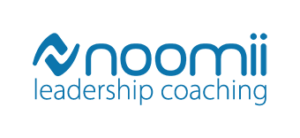
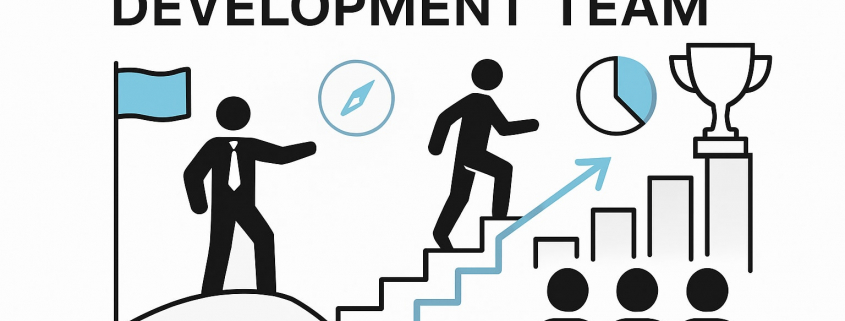


Leave a Reply
Want to join the discussion?Feel free to contribute!